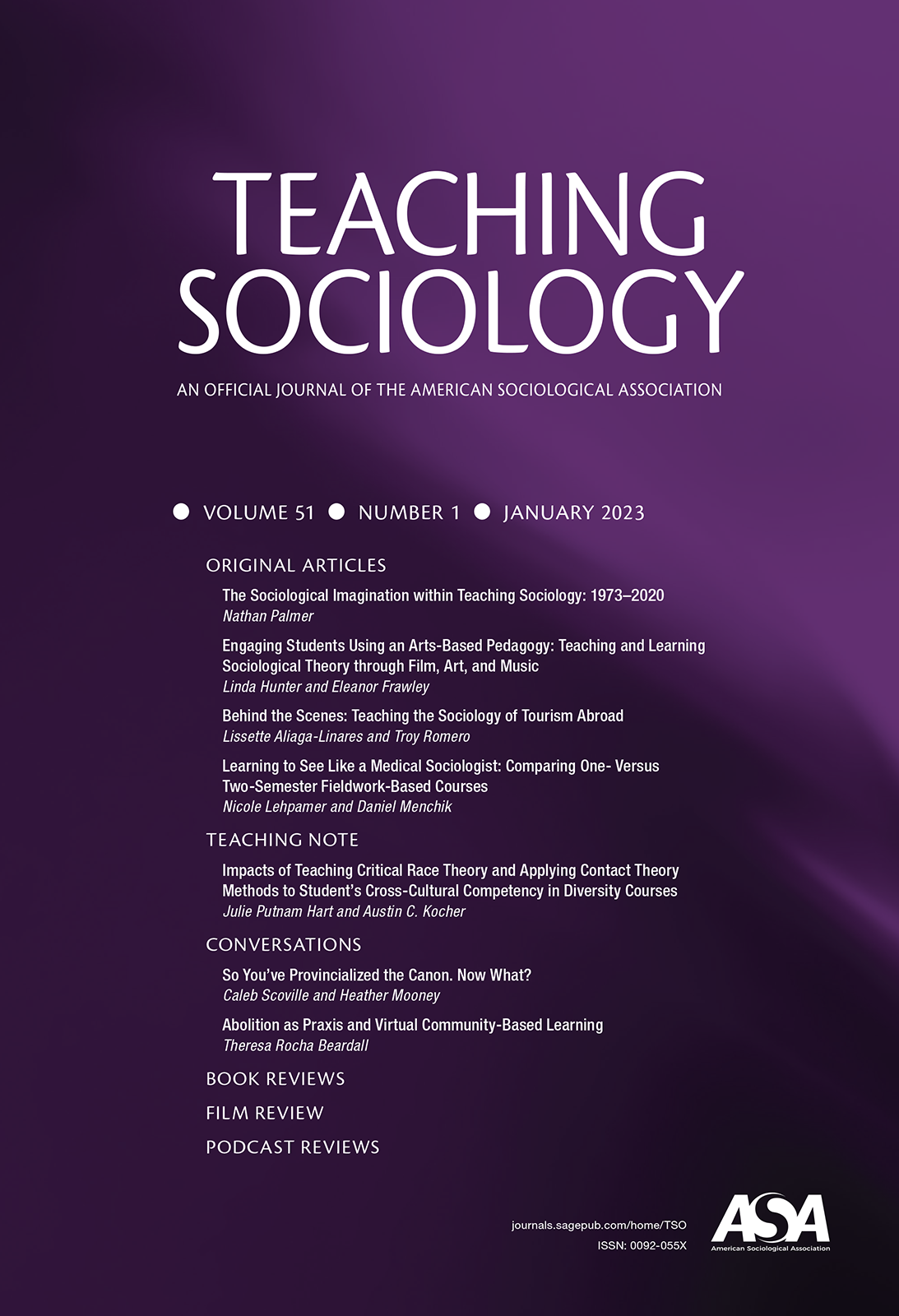
American Sociological Review
Sociology (General)
American Sociological Review (ASR) is the American Sociological Association’s flagship journal. The ASA founded this journal in 1936 with the mission to publish original works of interest to the discipline of sociology in general, new theoretical developments, results of research that advance understanding of fundamental social processes, and important methodological innovations. All areas of sociology are welcome in ASR. Emphasis is on exceptional quality and general interest.
The American Sociological Association (ASA), founded in 1905, is a non-profit membership association dedicated to advancing sociology as a scientific discipline and profession serving the public good. With 12,000 members, ASA encompasses sociologists who are faculty members at colleges and universities, researchers, practitioners, and students. About 20 percent of the members work in government, business, or non-profit organizations. ASA hosts an annual meeting with more than 6,000 participants and publishes 14 professional journals and magazines.
As the national organization for sociologists, ASA, through its Executive Office, is well positioned to provide a unique set of services to its members and to promote the vitality, visibility, and diversity of the discipline. Working at the national and international levels, ASA aims to articulate policy and implement programs likely to have the broadest possible impact for sociology now and in the future.
 |
 |
 |
 |
 |
 |
 |
 |
 |
 |
 |
 |
 |
American Sociological Review (ASR) is the American Sociological Association’s flagship journal. The ASA founded this journal in 1936 with the mission to publish original works of interest to the discipline of sociology in general, new theoretical developments, results of research that advance understanding of fundamental social processes, and important methodological innovations. All areas of sociology are welcome in ASR. Emphasis is on exceptional quality and general interest.
| David A. Cort | University of Massachusetts-Amherst |
| Laurel Smith-Doerr | University of Massachusetts-Amherst |
| Donald Tomaskovic-Devey | University of Massachusetts-Amherst |
| David Brady | University of Southern California, USA |
| Claire Laurier Decoteau | University of Illinois-Chicago |
| Cynthia Feliciano | Washington University-St. Louis |
| Karyn Lacy | University of Michigan-Ann Arbor |
| Sanyu A. Mojola | Princeton University |
| Rhacel Salazar Parreñas | University of Southern California |
| Lincoln G. Quillian | Northwestern University |
| Michael Rodríguez-Muñiz | University of California-Berkeley, USA |
| Christopher Uggen | University of Minnesota-Twin Cities, USA |
| Nathan Wilmers | Massachusetts Institute of Technology |
| Fenaba Addo | University of North Carolina-Chapel Hill |
| Pablo Perez-Ahumada | Universidad de Chile, Santiago, Chile |
| Asad L. Asad | Stanford University |
| Pallavi Banerjee | University of Calgary, Canada |
| Patricia A. Banks | Mount Holyoke College, USA |
| Max Besbris | University of Wisconsin-Madison |
| Deirdre Bloome | Harvard University |
| Ruth Braunstein | University of Connecticut |
| Japonica Brown-Saracino | Boston University |
| Christopher R. Browning | Ohio State University, USA |
| Peter Catron | University of Washington |
| Erin A. Cech | University of Michigan-Ann Arbor, USA |
| Koji Chavez | Indiana University-Bloomington |
| Kate Hee Choi | Western University, Ontario, Canada |
| D'Lane R. Compton | University of New Orleans |
| Lynn Prince Cooke | University of Bath |
| Maxine Leeds Craig | University of California-Davis, USA |
| Taylor M. Cruz | Northeastern University, USA |
| Waverly Duck | University of California-Santa Barbara, USA |
| Scott W. Duxbury | University of North Carolina-Chapel Hill |
| Maureen A. Eger | Umeå University (Sweden) |
| James R. Elliott | Rice University |
| Jacob William Faber | New York University |
| Anette Eva Fasang | Humboldt University (Berlin) |
| Jeremy E. Fiel | Rice University |
| Magne Paalgard Flemmen | University of Oslo (Norway) |
| Paula W. Fomby | University of Michigan-Ann Arbor |
| Kelley Fong | University of California, Irvine |
| Patrick Ryan Grzanka | University of Tennessee-Knoxville, USA |
| Laura Theresa Hamilton | University of California-Merced |
| Karen Ann Hegtvedt | Emory University, USA |
| Melissa Hodges | Villanova University |
| Brayden G King | Northwestern University |
| Elizabeth Korver-Glenn | University of New Mexico-Albuquerque |
| Tali Kristal | University of Haifa |
| Diego F. Leal | University of Arizona, USA |
| Hedwig Lee | Washington University-St. Louis |
| Jooyoung Kim Lee | University of Toronto, Canada |
| Ken-Hou Lin | University of Texas-Austin |
| Hexuan Liu | University of Cincinnati |
| Yao Lu | Columbia University, New York, USA |
| Aliza Luft | University of California-Los Angeles |
| Marcus Mann | Purdue University |
| Reuben Miller | University of Chicago, USA |
| Sanaz Mobasseri | Boston University |
| Eunmi Mun | University of Illinois at Urbana-Champaign, IL, USA |
| John O'Brien | New York University Abu Dhabi |
| Kathryn Pillay | University of KwaZulu-Natal, South Africa |
| Mirna Safi | Sciences Po, Paris, France |
| Arthur Sakamoto | Hong Kong Baptist University, China |
| Carsten Sauer | Bielefeld University, Germany |
| Jen Schradie | Sciences Po - Paris |
| Amanda J. Sharkey | University of Notre Dame, USA |
| Christina Simko | Williams College |
| Chris M. Smith | University of Toronto |
| LaTonya Trotter | University of Washington, USA |
| Kristin Turney | University of California-Irvine |
| Karolyn Tyson | University of North Carolina-Chapel Hill |
| Burrel James Vann, Jr. | San Diego State University |
| Miranda R. Waggoner | Rice University |
| Patricia Y. Warren | Florida State University, USA |
| Laurel Westbrook | Grand Valley State University, USA |
| Hajar Yazdiha | University of Southern California |
| Kathryne M. Young | George Washington University, USA |
Manuscript submission guidelines can be accessed on Sage Journals.
